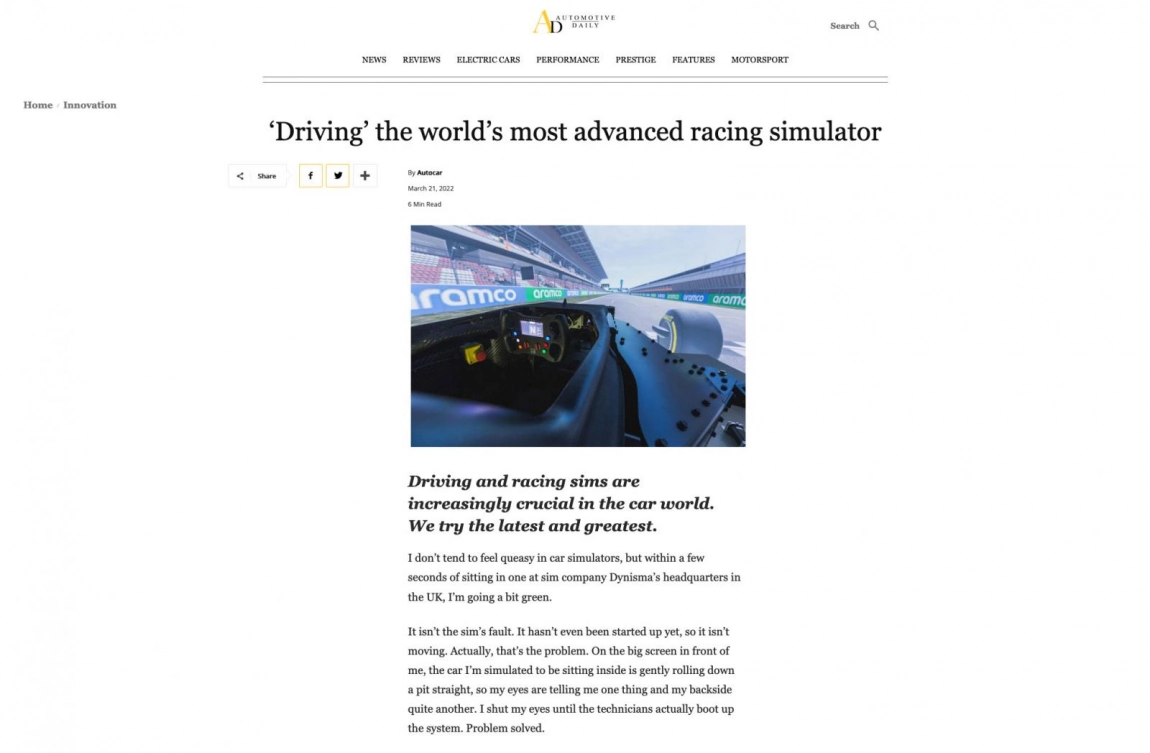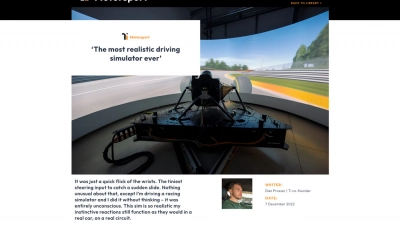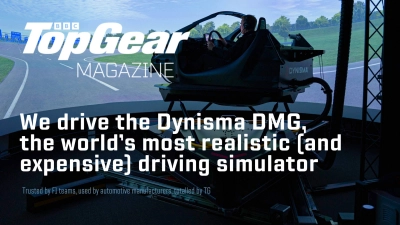
Automotive Daily visited Dynisma to test out the DMG-1 driving simulator; we talk about how simulation can save money and time in automotive car development, how low latency and high bandwidth affects the drivers experience, perception and ability to react.
Matt Prior writes about his experience with the Dynisma simulator and feels the relationship between eyes and body is key to making a simulator feel natural, which is why he came to visit the Bristol HQ and the DMG.
Matt believes simulators are easy to overlook, but explains how they can save millions of pounds and thousands of hours from developing a car. The automotive industry spends £7 billion a year on prototypes, and if the automotive makers can build fewer of these, it will save money.
Dynisma’s low latency and high bandwidth are key to “feeling things as they happen” he says. In the article, Matt explains how you need something that can vibrate you at high frequencies with as little friction as possible and no springing back or recoil when it stops, so that it’s all as accurate and feels as close to the real thing as possible.
After driving a few race tracks, Matt says “it’s as immersive a system as he’s ever felt. The lower the latency, the quicker you know about handling changes. Sharp inputs from kerbs or snapping into oversteer feel wickedly sharp to me.
But what marks this system out as special is more prosaic: cruising down a simulated test track with no lateral forces and running over small surface imperfections.
There are 5mm steps in the asphalt, noises thudded gently into the headset and which I feel through the seat as I drive up them and then down them, the car pitching gently.”



